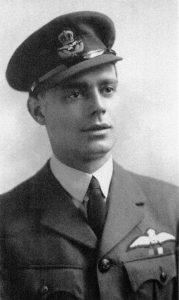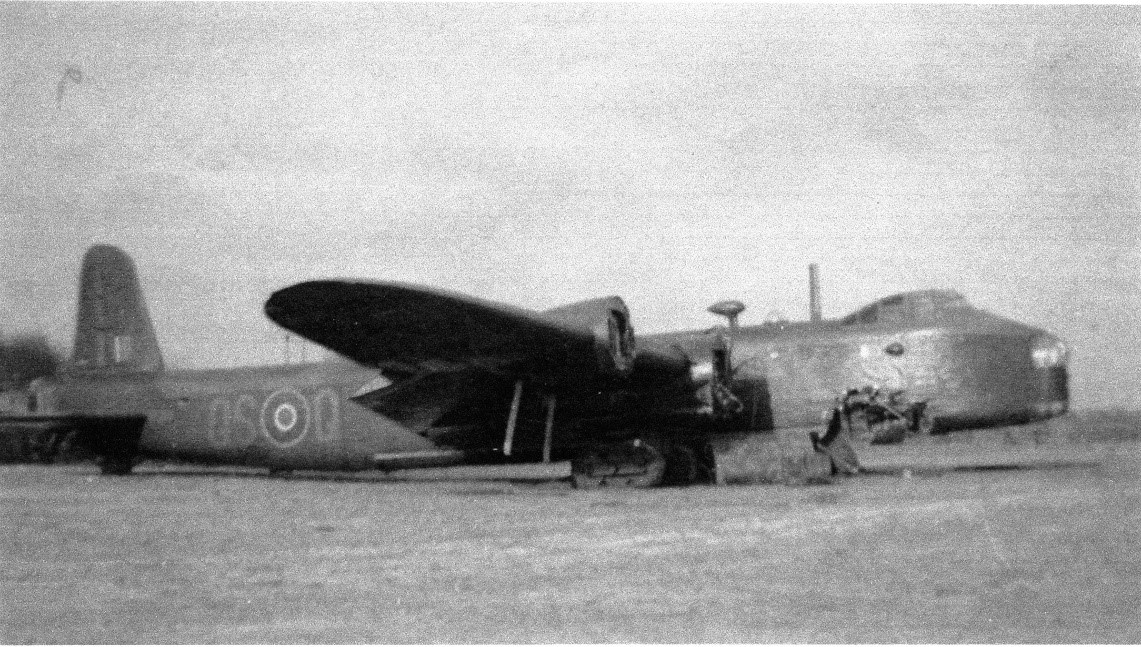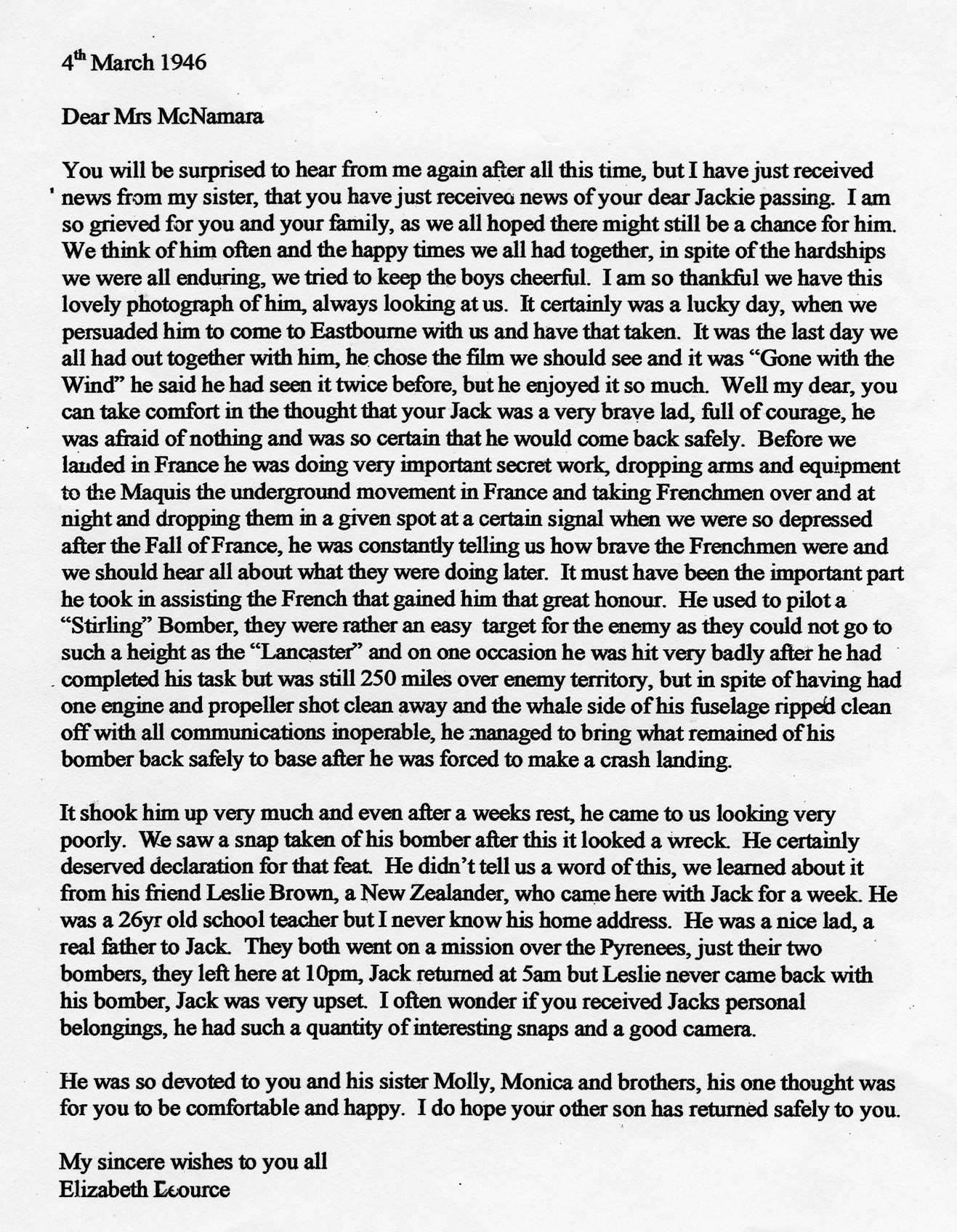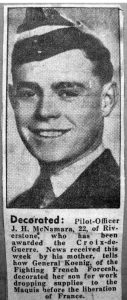Bill McNamara – OAM

John Henry McNamara, (Jack) was born on 25th October 1921, the second of six children born to Harry and Olive McNamara. He was born at Richards Avenue, Riverstone, this avenue was better known by the community as ‘Butchers Row’ because all the houses in the street were owned by the Riverstone Meat Company. Jack’s father Harry was the foreman in charge of all the handling of livestock at the meat works.
Jack spent his childhood in Butchers Row and attended the old Riverstone Public school for his early primary education, transferring to the new public school when it opened in 1929. The old school building is now the museum and houses the Riverstone Historical Society.
From all accounts Jack was a good scholar and after completing 6th class he transferred to the Marist Brothers school at Parramatta to complete his secondary education. He excelled in athletics, and in rugby league he captained the 6 stone 7 team that won the Marist Bros combined schools competition. This team was undefeated, scoring 218 points to 11 against, in a season, and played a curtain raiser to an Australia v England Test match, against a team from Queensland.
Jack played football with Rivo C grade with players like Noel (Butch) Drayton, Manny McCarthy, Waffie Schofields, Ronnie Wallwork, and John ‘Socker’ Ward.
Like most boys growing up in Riverstone in those times he was keen on fishing in South Creek and catching rabbits with his ferrets out in the meatworks paddocks. I recall Jack being expelled from the fellowship after a school get-together for Rivo school children held in the old Oddfellows Hall (now demolished). His expulsion was for dropping a cake of soap into the water being boiled for their afternoon tea.
Our family moved from Butchers Row to a house in Riverstone Road for a few years, and then we moved to a ten acre farm that Harry had bought on Carnarvon Road, Marsden Park. Harry was promoted to a livestock buyer for the meatworks but unfortunately was killed in a motor accident at Picton whilst returning home from a cattle sale at Moss Vale.
With no car driver in the family and being too far out from the town and schools, we moved back to 57 Riverstone Road. When Jack left school he commenced his working career at Sargood Gardiners, a clothing warehouse in Sydney.
A few years later the Second World War broke out and Jack joined the Royal Australian Air Force on 9th November 1941 and was stationed at Bradfield Park, Sydney before transferring to Narromine, NSW for his initial air training and where he had his first solo flight.
In November 1942 he was posted to No 1 SFTS camp, Borden-Canada to complete his training. In March 1943 he was transferred to Worcester, England, and in April transferred to the Pilots Advanced Flying Unit at Greenham Common.
He was then transferred to No. 82 operational training unit at Ossington, flying Wellington bombers, and in October 1943 gained his first posting on the 4 engine bombers. In November he was posted to Bomber Command No. 620 squadron based at Chedburgh.
In March 1944 he was posted to the RAF station at Fairford for his first operational flying. He took part in the D Day landings on 6th June 1944. His log book shows he carried out 29 operational flights against the enemy.
On one of these operations his plane was badly hit and damaged, one engine and propeller shot clean off and the fuselage was badly torn. Out of radio contact, he nursed the plane back to England and made a successful crash landing at his base. (See photo below.) The crew escaped uninjured but the incident upset Jack and it was months before he could talk about it.

He received his Commission as a Flying Officer in 1944 and later in September that year was awarded the Croix De Guerre by General Koenig, Leader of the French Forces.
On the 28th December, 1944, flying a British Stirling 4 engine bomber he was shot down by a German fighter whilst returning from a mission over Norway. Jack and his six crew members were all killed on impact.
On a trip to Norway in 1956 I had the opportunity to visit Jack’s grave. With a friend we hired a car and an interpreter and drove about 50 km from Oslo to the small village of Sande. We found a beautiful little cemetery with a Lutheran Church on one side and a butter factory on the other.
A group of young boys were standing with their bikes in front of the cemetery and the interpreter asked them if they knew of any British Airmen buried there. They all answered as one and with that jumped the fence and with their snow boots trampled down a track in the snow for us to walk to the graves. The seven headstones were visible above the snow.
We asked the boys if there was anyone locally who could tell us more about the crash and they referred us to the owner of the butter factory next door. On meeting the owner he explained that he saw the British Stirling bomber shot down by a German fighter, with the bomber crashing into the side of a hill in very heavy snow.
That night the owner and his friends tried to help the crew, but they had all died on impact. The next morning the Germans retrieved the bodies and with the assistance of the Lutheran Pastor gave the airmen a Christian burial, with the German soldiers saluting them at the ceremony.
I asked the owner how the graves were cared for; he told us Norway’s National day is celebrated in May each year (similar to our Anzac Day) and on this day all the war graves are decorated and honoured. It was a sad day but very fulfilling to know that Jack is with his crew in this faraway land, his grave and heroic deeds are appreciated and not forgotten by the Norwegian people.
When it was announced that Jack was awarded the Croix de Guerre by General Koenig, and also when he was posted missing and eventually announced deceased, our mother received many letters and telegrams, too many to repeat in this article but I will share with you one of the letters, particularly one from a lady unknown to our family with whom Jack and his friends spent many happy hours of their leave time. It will give you some idea what Aussie boys went through in the wasted war years.


